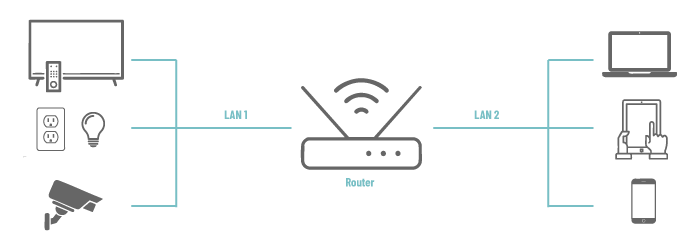
In a world increasingly focused on connectivity, IoT and connected objects have become indispensable: smart thermostats, voice assistants, surveillance cameras. Practical and intuitive, they make life easier. But since these devices are connected to your Wi-Fi network, they can also represent a gateway for cybercriminals? That’s why computer security has never been so crucial to protecting your personal data and that of your loved ones.
Think of your home Wi-Fi network as a small business: every connected device is an employee. To ensure the security and efficiency of your business, you wouldn’t let every employee have access to all your confidential information. Similarly, by creating a dedicated segment for connected objects, you isolate these devices from the rest of your wifi network.
Why isolate your connected objects from the rest of your home network?

Although WPS makes it easy to connect a device quickly, it is also a security vulnerability. Similarly, masking the SSID (Wi-Fi network name) prevents unauthorized persons from easily detecting your network.
What to do?
In the age of Wi-Fi networks and connected objects, digital security is more important than ever. By adopting effective security practices and segmenting your Wi-Fi network, you can significantly reduce the risk of intrusion and protect your privacy. Don’t forget that IT security is an ongoing process: it’s crucial to remain vigilant and regularly update your knowledge of the subject.
And what steps are you taking to secure your connected objects?